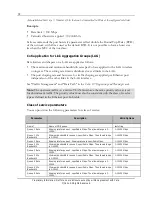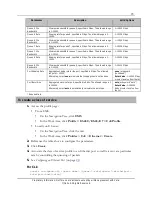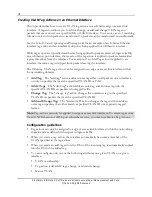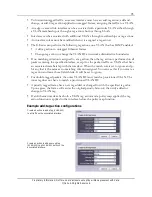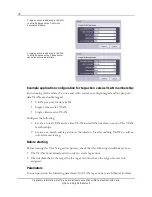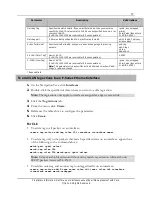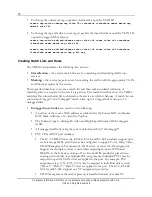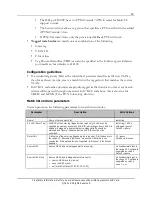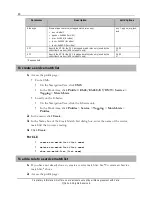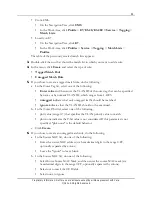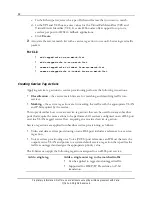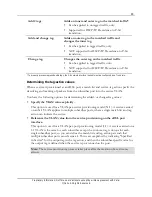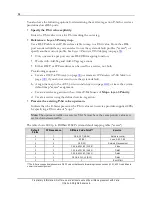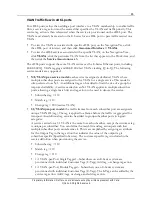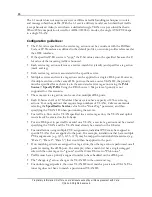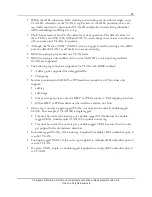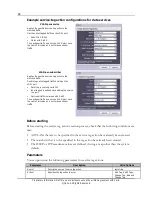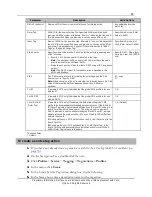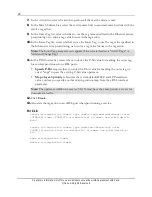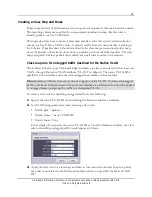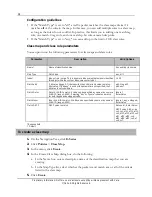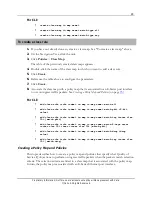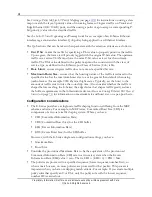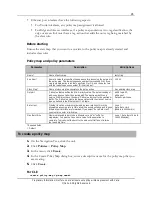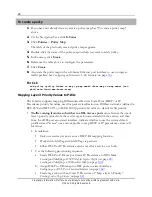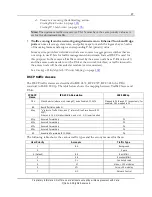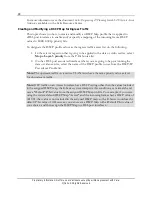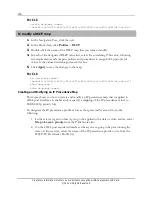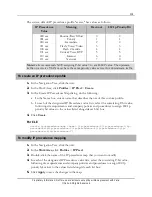
86
Proprietary Information: Not for use or disclosure except by written agreement with Calix.
© Calix. All Rights Reserved.
The 1:1 model does not require any new or different traffic handling techniques to isolate
and manage subscriber traffic. With the 1:1 service delivery model, each subscriber's traffic
(except broadcast video) is sent down a dedicated single VLAN on a per subscriber basis.
When ATM encapsulation is used for ADSL/ADSL2+ modes, the single ATM PVC maps
to a single VLAN.
Configuration guidelines:
The P-bit value specified in the service tag action must be consistent with the DiffServ
Code or IP Precedence as defined in the default profiles, or custom profiles referenced at
the xDSL interface.
If the specified P-Bit source is "copy," the P-bit value cannot be specified because the P-
bit value of the incoming traffic is honored.
Each service tag action references a service-match list (classify) and specifies a tag action
(mark and tag).
Each service tag action is associated with a specific service.
Multiple services and service tag actions can be applied to a single xDSL port. However,
if multiple services on the same xDSL port use the same outer VLAN ID, the priority
must be specified for each service in the associated service tag action using the
P-bit
Source = Specify P-Bit
. Using the P-Bit Source = Map a layer-3 priority is not
supported for this scenario.
The same service tag action can be used on multiple xDSL ports.
Each E-Series shelf, or E7 Modular Chassis system has a capacity of 256 service tag
actions. For configurations that require large numbers of VLANs, Calix recommends
selecting the
Specified in Service
value for the "Outer Tag" parameter, and then
specifying the VLAN ID when provisioning the service.
For traffic to flow on the VLAN specified in a service tag action, the VLAN and uplink
must already be created on the E-Series.
For an xDSL port to pass traffic carried on a VLAN, a service tag action must be created
specifying the VLAN and the VLAN must already be created on the E-Series.
For installations using multiple PVC assignments, individual PVCs may be mapped to
specific VLANs that are applied to the port. For example, installations that have multiple
PVC assignments (e.g. 0/33, 8/33, 0/35) may be mapped to individual data services (e.g.
“Data 1”, “Data 2”, “Data 3”) that would then be applied to the port.
If no matching criteria are assigned to a tag action, then the tag action is performed on all
packets entering the xDSL port. For example, when a match list has a single untagged
rule with the outer tag set to "ignore" and the Outer P-bit set to "Pbit-none."
Traffic must have a priority assigned in order to be scheduled on the xDSL port.
The "change-tag" action changes the VLAN ID in the outermost tag.
For double-tagged packets, the outer VLAN ID must match a provisioned VLAN. The
inner tag does not have to match a provisioned VLAN ID.

